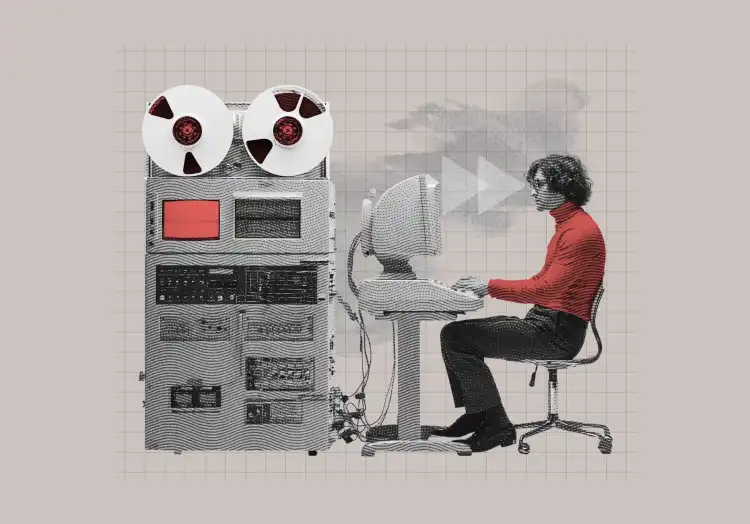Why should pharma marketers look at B2B SaaS strategies for inspiration?
Pharma can borrow from proven B2B SaaS tactics to build trust, drive engagement, and deliver authentic support for healthcare professionals.
How do successful B2B marketers approach content strategy?
In the B2B world, especially SaaS, content marketing is a core part of the commercial strategy. Marketers invest heavily in helpful content and resources, such as blogs, videos, newsletters, events, and even full e-learning courses. These efforts are designed to support their customers’ goals. What’s more, this content is easy to find. It is intentionally designed to be discovered, engaged with, and shared by the target audience.
How does this compare with Pharma’s content strategy efforts?
Pharma also invests in development of content; but the focus is on product communications, data and differentiators. While this type of content is important, it’s usually required by customers much further down the decision journey, and only provides value to those actively seeking it. This approach feels close to commercial impact, because it’s designed to deliver at the bottom of the funnel. However, it is not relevant to the majority of potential customers most of the time. Therefore, the content is not used as often as expected and engagement is low.
There is rarely a clear content strategy designed to win attention and immerse prospects who are not already at the consideration stage. This type of content is usually only considered as a one-off effort to generate ‘consent’, rather than providing consistent opportunities to engage healthcare professionals for the long-term. This lack of single-minded content strategy makes it difficult to maintain quality, consistency, and focus. As a result, much of this content ends up wasted providing little real value for customers or the business.
What can pharma learn from the way B2B marketers segment customers and personalise content?
Another area where pharma can learn from B2B SaaS is in integrating content with CRM systems and personalisation. In B2B SaaS, the moment a customer engages with content or signs up, personalised workflows kick in; including welcome emails, behaviour-triggered follow-ups, and automated sales nurturing.
This approach keeps customers engaged with the problems they want to solve, it keeps marketing content relevant, builds trust, and helps sales teams understand what individual customers care about, so they can sell more effectively, and at the right time.
Pharma hasn’t quite nailed this yet. Marketers haven’t been onboarded or empowered to use their CRM systems to their full potential. That’s why omnichannel strategies are still fragmented, lacking clear purpose or direction.
For a simple introduction to how pharma marketers can use CRM for segmentation and personalisation, check out this educational video.
What can pharma learn from B2B SaaS when it comes to customer service and support?
B2B brands know growth doesn’t stop at the first sale or conversion. It is about ongoing customer success and confidence. The better supported a customer feels, the more success they have, and the more confident they feel. This leads to more frequent and sophisticated product use, and higher revenues for the company.
In B2B SaaS, onboarding is structured and purposeful, with long-term follow-up and advocacy programs. Successful customers are identified and enrolled in partnership or ‘reseller’ programmes, which helps to bring in new prospects through trusted, peer-to-peer influencer marketing. This is very relevant for pharma because healthcare professionals especially value peer to peer content, and networking. They trust their peers more than pharma brands so advocacy programmes and influencer marketing can be highly effective.
Why hasn’t pharma succeeded with content marketing yet?
At its core pharma’s challenge is that sales teams chase quick-wins and conversions without considering the more-complex, modern customer journey. This journey should not require manually pushing customers down a funnel each time you run a campaign. Instead there should be a clear, ‘always-on’ process for lead engagement and nurturing.
Until pharma shifts its thinking toward long-term investment into consistent customer engagement, where they provide genuine and immediate value for customers, engagement will remain low, and marketing efforts won’t impact prescribing habits or brand loyalty.

Why is SaaS like a pharma product?
The way HCPs evaluate a new pharma product mirrors how business leaders assess SaaS; switching comes with both risk and opportunity.
Both require significant effort and investment to understand and adopt. Even if a new software or drug is better than the incumbent product, customers weigh up whether it is worth the effort. Because outcomes depend on your confidence and ability, and you will potentially see a dip in performance before you reap the benefits. Plus, you have to trust that what you’re hearing about the performance of the product will convert to the real-world.
Software companies that succeed don’t just sell their product or hype features over competitors. Instead they build trust by showing they understand your challenges and can help you do your job better. They earn the right to speak about their product with authority.
This effort builds trust and makes customers more willing to try and stick with their product, because they believe the company supports their goals not just their bottom line.
Pharma marketers can take this approach to heart, focusing on building trust and demonstrating value beyond the product itself, and supporting healthcare professionals in their daily work. This mindset shift can drive stronger engagement, better relationships, and, ultimately, higher commercial impact.
Become a better healthcare marketer. Sign up for 2 emails a month with insights, tips and resources.


